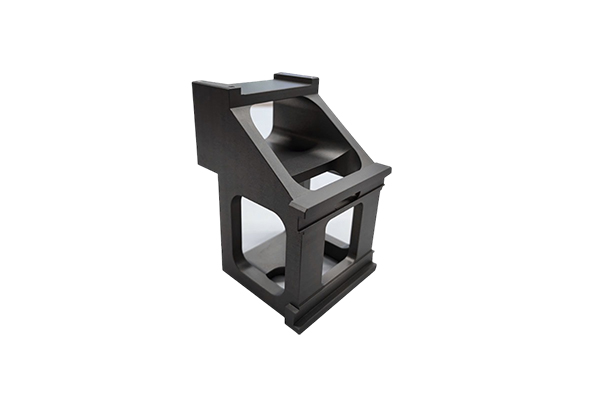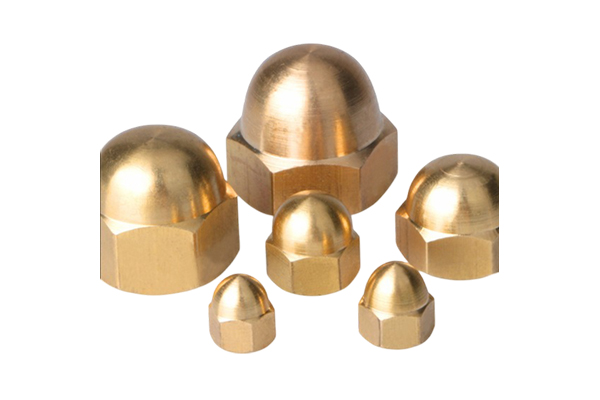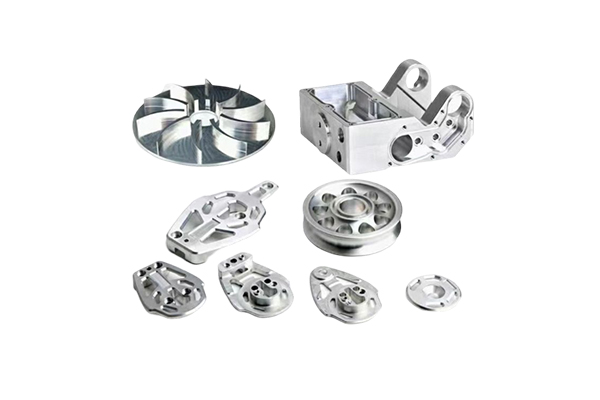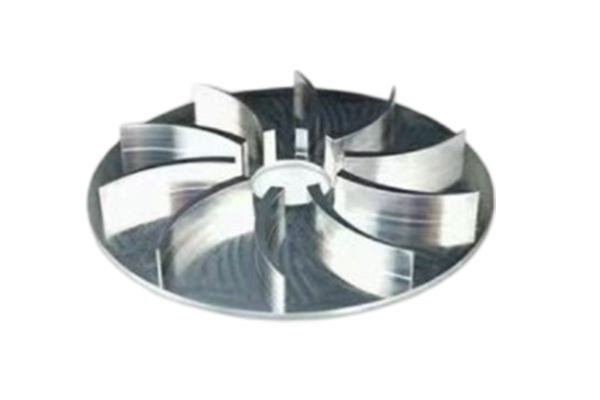How does the load-bearing capacity of aerospace hinge link parts affect the deployment accuracy of spacecraft?
Release Time : 2025-06-17
As a key component of the spacecraft deployment system, the bearing capacity and deployment accuracy of aerospace hinge link parts are closely and complexly related. When a spacecraft performs a mission in space, the accuracy of the deployment process is directly related to the success or failure of the mission, and behind this, the bearing capacity of the connector plays a decisive role.
The bearing capacity of aerospace hinge link parts directly affects its structural stability. If the bearing capacity of the connector is insufficient, it is easy to deform or even damage when bearing the weight and external force of each component during the deployment of the spacecraft. For example, when a large solar panel is deployed, if the bearing capacity of the hinge cannot support the weight of the panel, the gravity at the moment of deployment may bend the connector, causing the entire panel to fail to deploy smoothly according to the predetermined trajectory, thus deviating from the correct position, and the accuracy cannot be guaranteed.
Insufficient bearing capacity of the connector can also cause vibration and shaking problems. During the deployment of the spacecraft, the movement of each component itself will generate a certain inertial force and impact force. When the bearing capacity of the connector is limited and it is difficult to effectively buffer these external forces, it will cause severe vibration. These vibrations will cause uncontrollable displacement of the unfolding components, interfere with their normal motion trajectory, and ultimately cause the spacecraft to be unable to accurately unfold to the predetermined shape, affecting the subsequent functions.
From the perspective of mechanical transmission, aerospace hinge link parts are key nodes for force transmission. Their load-bearing capacity determines whether the force can be accurately and stably transmitted to each component. If the load-bearing capacity of the connector is poor, loss and offset will occur during the force transmission process, causing uneven force on each component. This uneven force will cause the components to move asynchronously. For example, when a satellite antenna is unfolded, the hinges at different positions have different load-bearing capacities, causing the unfolding speeds of the antenna parts to be inconsistent. In the end, the antenna cannot be fully unfolded into a standard shape, seriously affecting the accuracy and efficiency of signal transmission and reception.
The load-bearing capacity is also closely related to the fatigue life of the connector. If it works for a long time close to or beyond its load-bearing limit, the connector will accelerate fatigue, and the internal structure will gradually develop fine cracks or loosen. As the number of uses increases, these hidden dangers will continue to expand, resulting in a decline in the performance of the connector. During the subsequent deployment of the spacecraft, the connectors with degraded performance will find it difficult to maintain stable motion control, resulting in deviations in deployment accuracy, and may even fail at critical moments, causing irreversible consequences.
In addition, the load-bearing capacity of aerospace hinge link parts will also affect the overall layout of the design. When the load-bearing capacity of the connector is limited, in order to ensure the overall structural stability of the spacecraft, the designer may need to design the deployment parts lightweight or add additional support structures. Lightweight design may sacrifice certain performance of the components, while additional support structures will increase the complexity and weight of the system. Both of these situations will indirectly affect the deployment accuracy of the spacecraft. The former may cause deformation due to insufficient component strength, and the latter may cause more uncontrollable factors to interfere with the deployment process due to complex structures.
The reliability of the load-bearing capacity of the connector is equally important for deployment accuracy. Even if the connector theoretically has sufficient load-bearing capacity, if its reliability is poor, accidental performance fluctuations during the deployment process will also undermine the stability of the entire system. For example, in the complex environment of space, the connector suddenly cannot bear the expected weight due to material aging, minor damage, etc., which will instantly disrupt the deployment rhythm of the spacecraft and make the deployment accuracy completely out of control.
In order to ensure the deployment accuracy of spacecraft, the load-bearing capacity of hinge link parts must be fully considered when designing and manufacturing aerospace hinge link parts. Through scientific material selection, reasonable structural design, strict quality inspection and testing simulating actual working conditions, the load-bearing capacity of the connector can be perfectly matched with the deployment requirements of the spacecraft, providing a solid guarantee for the precise operation of the spacecraft in space.
The bearing capacity of aerospace hinge link parts directly affects its structural stability. If the bearing capacity of the connector is insufficient, it is easy to deform or even damage when bearing the weight and external force of each component during the deployment of the spacecraft. For example, when a large solar panel is deployed, if the bearing capacity of the hinge cannot support the weight of the panel, the gravity at the moment of deployment may bend the connector, causing the entire panel to fail to deploy smoothly according to the predetermined trajectory, thus deviating from the correct position, and the accuracy cannot be guaranteed.
Insufficient bearing capacity of the connector can also cause vibration and shaking problems. During the deployment of the spacecraft, the movement of each component itself will generate a certain inertial force and impact force. When the bearing capacity of the connector is limited and it is difficult to effectively buffer these external forces, it will cause severe vibration. These vibrations will cause uncontrollable displacement of the unfolding components, interfere with their normal motion trajectory, and ultimately cause the spacecraft to be unable to accurately unfold to the predetermined shape, affecting the subsequent functions.
From the perspective of mechanical transmission, aerospace hinge link parts are key nodes for force transmission. Their load-bearing capacity determines whether the force can be accurately and stably transmitted to each component. If the load-bearing capacity of the connector is poor, loss and offset will occur during the force transmission process, causing uneven force on each component. This uneven force will cause the components to move asynchronously. For example, when a satellite antenna is unfolded, the hinges at different positions have different load-bearing capacities, causing the unfolding speeds of the antenna parts to be inconsistent. In the end, the antenna cannot be fully unfolded into a standard shape, seriously affecting the accuracy and efficiency of signal transmission and reception.
The load-bearing capacity is also closely related to the fatigue life of the connector. If it works for a long time close to or beyond its load-bearing limit, the connector will accelerate fatigue, and the internal structure will gradually develop fine cracks or loosen. As the number of uses increases, these hidden dangers will continue to expand, resulting in a decline in the performance of the connector. During the subsequent deployment of the spacecraft, the connectors with degraded performance will find it difficult to maintain stable motion control, resulting in deviations in deployment accuracy, and may even fail at critical moments, causing irreversible consequences.
In addition, the load-bearing capacity of aerospace hinge link parts will also affect the overall layout of the design. When the load-bearing capacity of the connector is limited, in order to ensure the overall structural stability of the spacecraft, the designer may need to design the deployment parts lightweight or add additional support structures. Lightweight design may sacrifice certain performance of the components, while additional support structures will increase the complexity and weight of the system. Both of these situations will indirectly affect the deployment accuracy of the spacecraft. The former may cause deformation due to insufficient component strength, and the latter may cause more uncontrollable factors to interfere with the deployment process due to complex structures.
The reliability of the load-bearing capacity of the connector is equally important for deployment accuracy. Even if the connector theoretically has sufficient load-bearing capacity, if its reliability is poor, accidental performance fluctuations during the deployment process will also undermine the stability of the entire system. For example, in the complex environment of space, the connector suddenly cannot bear the expected weight due to material aging, minor damage, etc., which will instantly disrupt the deployment rhythm of the spacecraft and make the deployment accuracy completely out of control.
In order to ensure the deployment accuracy of spacecraft, the load-bearing capacity of hinge link parts must be fully considered when designing and manufacturing aerospace hinge link parts. Through scientific material selection, reasonable structural design, strict quality inspection and testing simulating actual working conditions, the load-bearing capacity of the connector can be perfectly matched with the deployment requirements of the spacecraft, providing a solid guarantee for the precise operation of the spacecraft in space.







